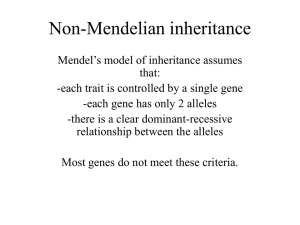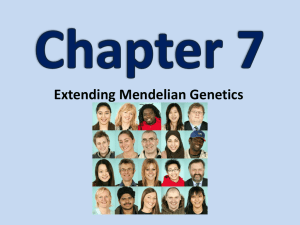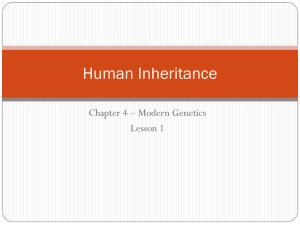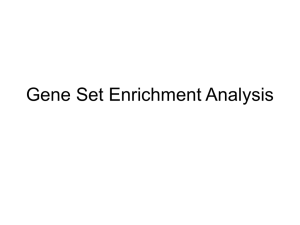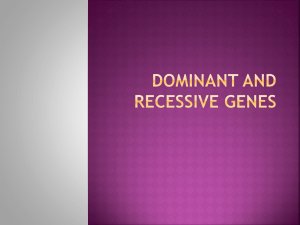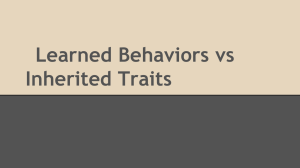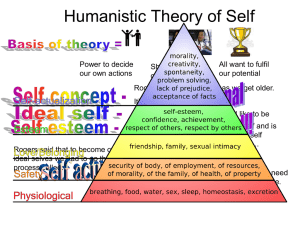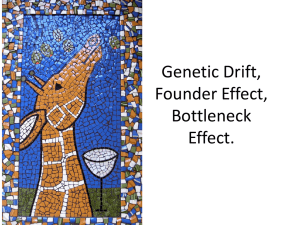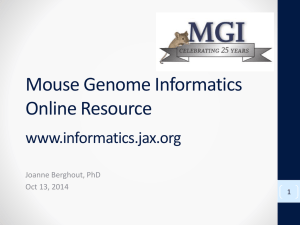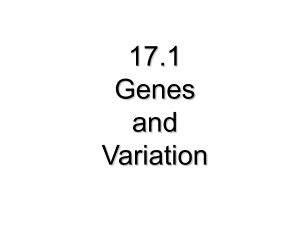gene pool - Midland Park School District
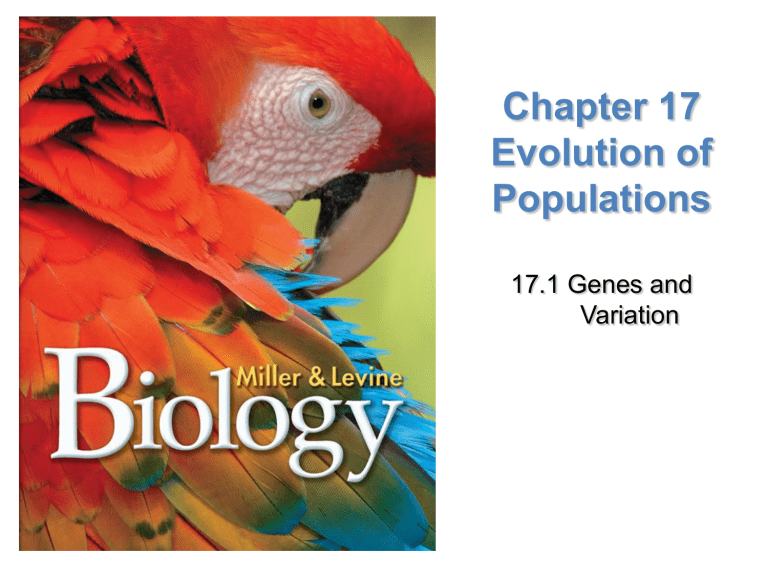
Chapter 17
Evolution of
Populations
17.1 Genes and
Variation
Lesson Overview Genes and Variation
THINK ABOUT IT
Darwin developed his theory of evolution without knowing how inherited traits passed from one generation to the next or where variation came from.
What would happen when genetics answered questions about how heredity works?
Lesson Overview Genes and Variation
Genetics Joins Evolutionary Theory
By the 1930’s, researchers discovered that heritable traits are controlled by genes.
They realized that changes in genes and chromosomes generated variation.
By the 1950’s, Watson & Crick’s model of
DNA helped to demonstrate the molecular nature of variations and mutations.
Lesson Overview Genes and Variation
Genotype and Phenotype in Evolution
Recall that an organism’s genotype is the particular combination of alleles it carries.
An individual’s genotype, together with environmental conditions, produces its phenotype.
Phenotype includes all physical, physiological, and behavioral characteristics of an organism.
Lesson Overview Genes and Variation
Genotype and Phenotype in Evolution
It is important for us to remember that natural selection acts directly on phenotype, not genotype.
Some individuals have phenotypes that are better suited to their environment than others.
These individuals produce more offspring and pass on more copies of their genes to the next generation.
Lesson Overview Genes and Variation
Populations and Gene Pools
Genetic variation is studied in populations.
Recall that a population is a group of individuals of the same species that mate and produce offspring. Since they interbreed, they share a gene pool.
A gene pool consists of all the genes, including all the different alleles for each gene that are present in a population.
Lesson Overview Genes and Variation
Populations and Gene Pools
Researchers study gene pools by examining the relative frequency of an allele.
The relative frequency of an allele is the number of times a particular allele occurs in a gene pool, compared with the number of times other alleles for the same gene occur. It is often expressed as a %.
Variation and Gene Pools
For example, the relative frequency of the dominant
B allele is 40%.
• We get that by adding one half of the heterozygous population or 24% to all of the homozygous black population or 16%.
What is the relative frequency of the recessive b allele?
Copyright Pearson Prentice Hall
Lesson Overview Genes and Variation
Populations and Gene Pools
In genetic terms, evolution is defined as any change in the relative frequency of alleles in the gene pool of a population over time.
For example, if the frequency of the B allele changed from 40% to 30% in the mouse population, we would say the population is evolving.
Natural selection operates on individuals, but resulting changes in allele frequencies show up in populations . Populations, rather than individuals, evolve!
Lesson Overview Genes and Variation
Sources of Genetic Variation: Mutations
Mutations that produce changes in phenotype may or may not affect fitness. Some mutations may be lethal or may lower fitness; others may be beneficial.
Mutations matter in evolution only if they can be passed from generation to generation. The mutation must occur in the cells that produce either eggs or sperm.
Lesson Overview Genes and Variation
Sources of Genetic Variation
Another source of genetic variation is genetic recombination during sexual reproduction. The
23 pairs of chromosomes in the gametes can produce millions of different gene combinations upon fertilization.
Crossing-over, which occurs during meiosis and the production of gametes, increases the number of genotypes (gene combinations) that can appear in offspring.
Lesson Overview Genes and Variation
Sexual reproduction can produce many different phenotypes. However, it does not change the relative frequency of alleles in a population.
Since it does not change the frequencies of alleles, It does not cause evolution. (It merely increases variation.) Natural selection causes evolution.
Lesson Overview Genes and Variation
Sources of Genetic Variation:
Lateral Gene Transfer
Lateral gene transfer occurs when organisms pass genes from one individual to another that is not its offspring.
It can occur between organisms of the same species or organisms of different species. Lateral gene transfer occurs between bacteria during transformation.
Lateral gene transfer can increase genetic variation in a species that picks up the “new” genes.
Lesson Overview Genes and Variation
Single-Gene and Polygenic Traits
The number of phenotypes produced for a trait depends on how many genes control the trait.
Lesson Overview Genes and Variation
Single-Gene Traits
A single-gene trait is a trait controlled by only one gene. Single-gene traits may have just two or three distinct phenotypes.
The most common form of the allele can be dominant or recessive. Dominance of an allele for a single-gene trait does not necessarily mean that the dominant phenotype will always appear with greater frequency in a given population.
Lesson Overview Genes and Variation
An example of a singlegene trait is the presence of dark bands that appear on the shells of a certain species of snails. Even though the allele for shells without bands is dominant, a population may show a greater frequency of the
“with bands” phenotype.
Lesson Overview Genes and Variation
Polygenic Traits
Polygenic traits are traits controlled by two or more genes.
Each gene of a polygenic trait often has two or more alleles.
A single polygenic trait often has many possible genotypes and even more different phenotypes.
Lesson Overview Genes and Variation
Polygenic Traits
Human height, which varies from very short to very tall, is an example of a polygenic trait.
The bell-shaped curve in the graph is typical of polygenic traits.
